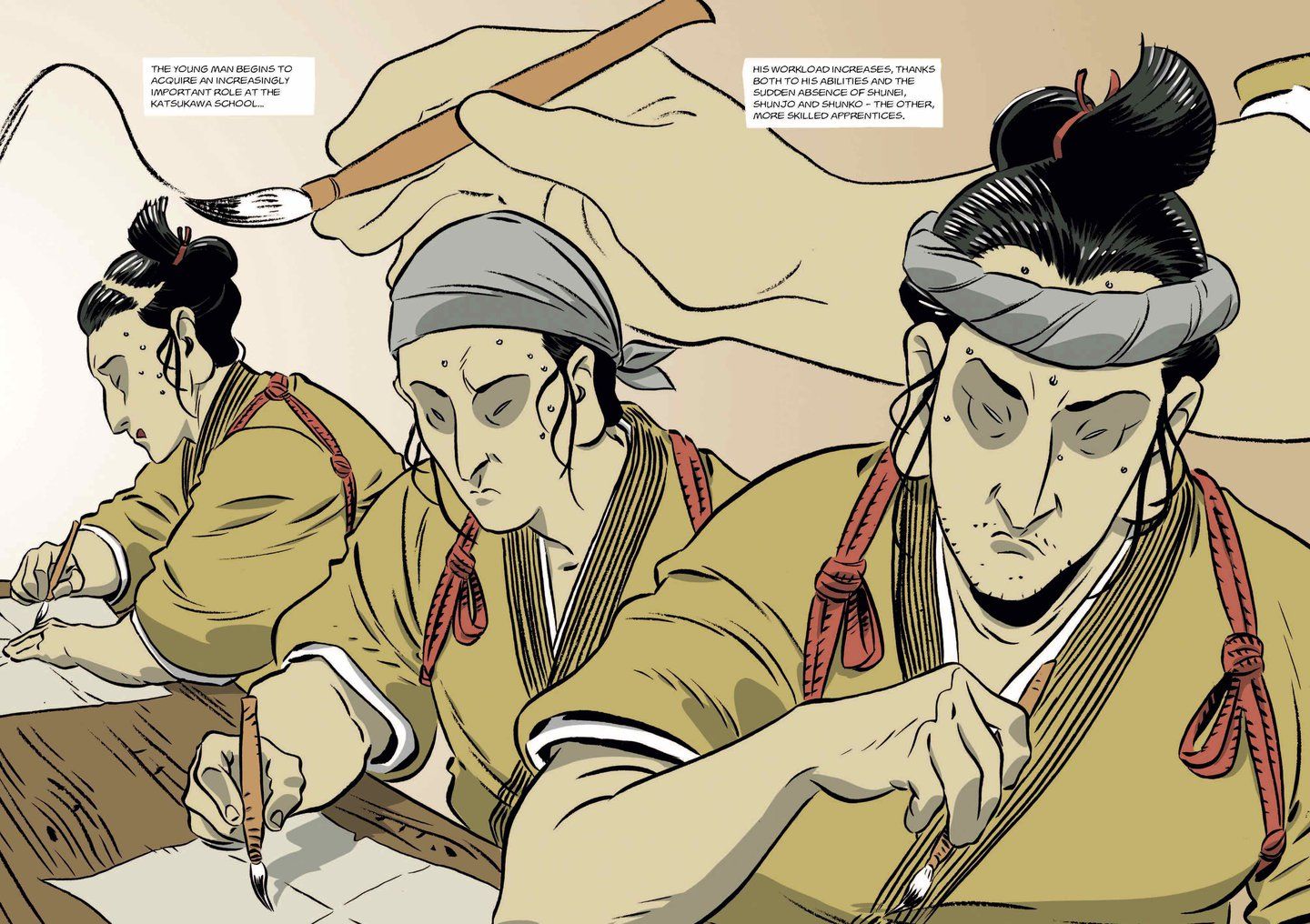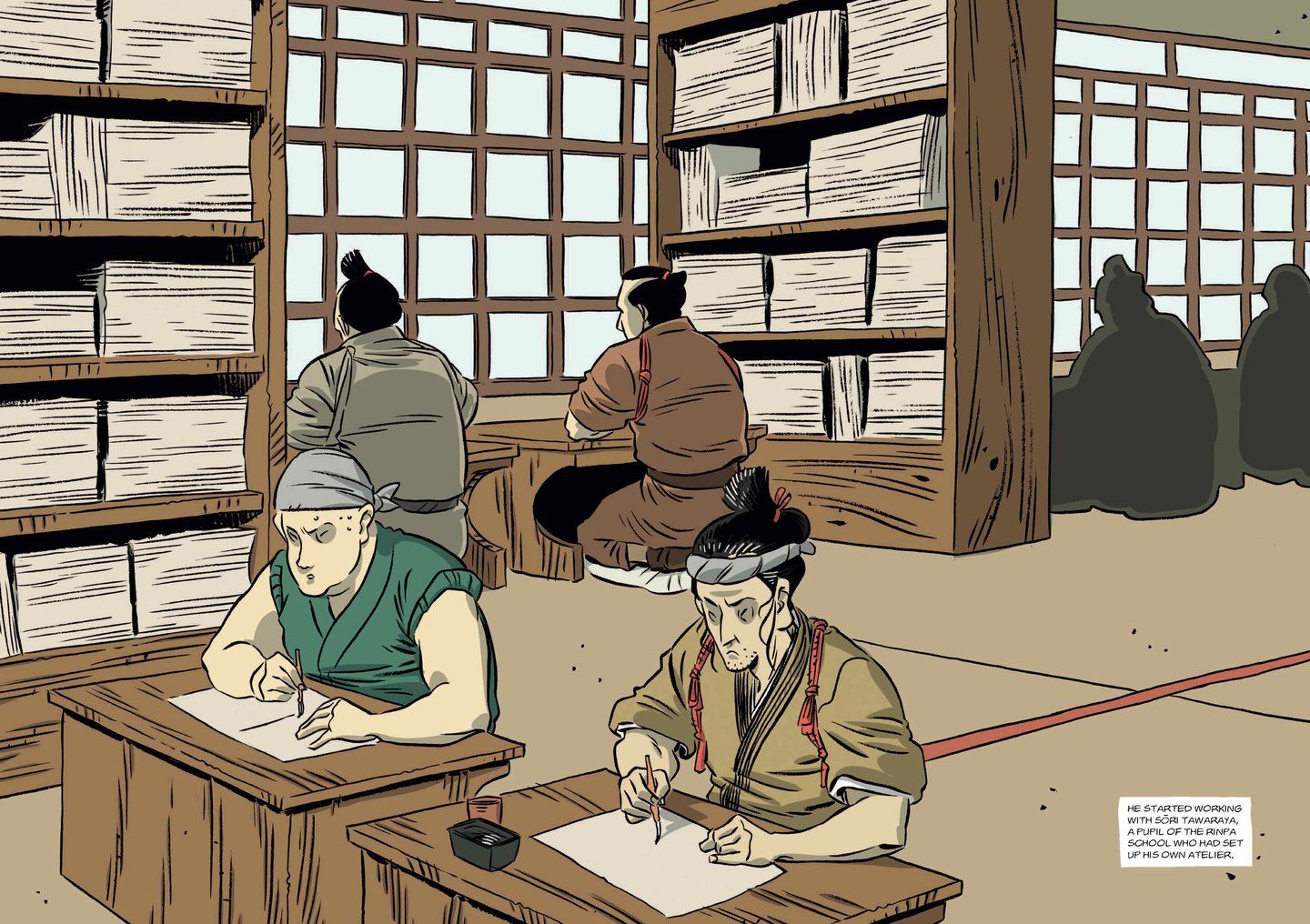Hokusai Shines a Light on the Classic Japanese Artist
- WRITER
- Francesco Matteuzzi
- Artist
- Giuseppe Latanza
- Cover Artist
- Giuseppe Latanza
- Publisher
- Laurence King Publishing
- Price
- 19.99
- Release Date
- 2021-04-06
One of the most influential, oft-imitated and referenced artists in all of Japanese history is Katsushika Hokusai, known simply as Hokusai. The mind behind pieces of iconic work including "The Great Wave Off Kanagawa" and the "Great Daruma," Hokusai's life and times are explored in the original graphic novel Hokusai: A Graphic Biography by Giuseppe Latanza and Francesco Matteuzzi. An English-language edition of the biography, translated by Edward Fortes after first being published in Italian, has been published by Laurence King Publishing, providing an accessible, informative look at the man who shaped how the world sees Japan through the prism of classical art.
Hokusai's birth and rising prominence in the Japanese art scene of the 18th century came at a time when the capital city of Edo, later to become Tokyo, began experiencing an influx of domestic visitors from the other parts of Japan fueled by a national obsession over Mount Fuji. As the capital steadily grew, Hokusai captured various elements of Japanese culture and the beauty of the geography through paintings, woodblock prints and a series of educational manga that helped showcase feudal Japan to the masses and encapsulate one of the most romantic periods in the nation's history. And more than just staying within a single art form and genre, Hokusai would expand his work into satire of contemporary culture, instructional manuals and more before his artwork would expand beyond Japan's borders in the 19th century to help the outside world see Japan through his eyes.
Writer Francesco Matteuzzi presents this graphic novel like a textbook; there's plenty of narratively driven pages, but these are interspersed with pages of just text to help set the scene and underscore the historical importance of what's being shown. There is a sense of detachment that Matteuzzi maintains over the course of the biography, taking on a more omniscient perspective as he chronicles the last decades of feudal Japan across Hokusai's life before showing his impact on both the country and the wider world as Japan is forced to open its borders and Hokusai's work extends to audiences he could have never imagined.
Latanza works with a more muted, earthy color palette as he brings the trials and tribulations of Hokusai's life to the page. The story behind Hokusai's most iconic work, including his Thirty-Six Views of Mount Fuji series of woodblock prints, are on full display here, with Latanza recreating the artwork itself seamlessly. This is a story full of stoic characters, befitting the cultural expectations of feudal Japan at the time, but Latanza still manages to deliver the subtle nuances of emotion and tragedy that Hokusai faced over his long life. The most impressive artwork comes towards the end of the graphic novel as Latanza shows how Japan and Tokyo evolve, bringing the full scope of the story to bear.
Most people know of Hokusai's work without actually knowing who Katsushika Hokusai is, and Matteuzzi and Latanza help shine a light on one of the most influential figures to ever come out of Japan. Hokusai: A Graphic Biography isn't a revolutionary biography, but is a well-researched, competently crafted and informative look at its subject. Gorgeously presented in a hardcover edition, this original graphic novel is an accessible read for those unfamiliar with Hokusai and the world of feudal Japan while documenting the sheer breadth of work from the artist who captured the end of one of Japan's most romantic periods.



